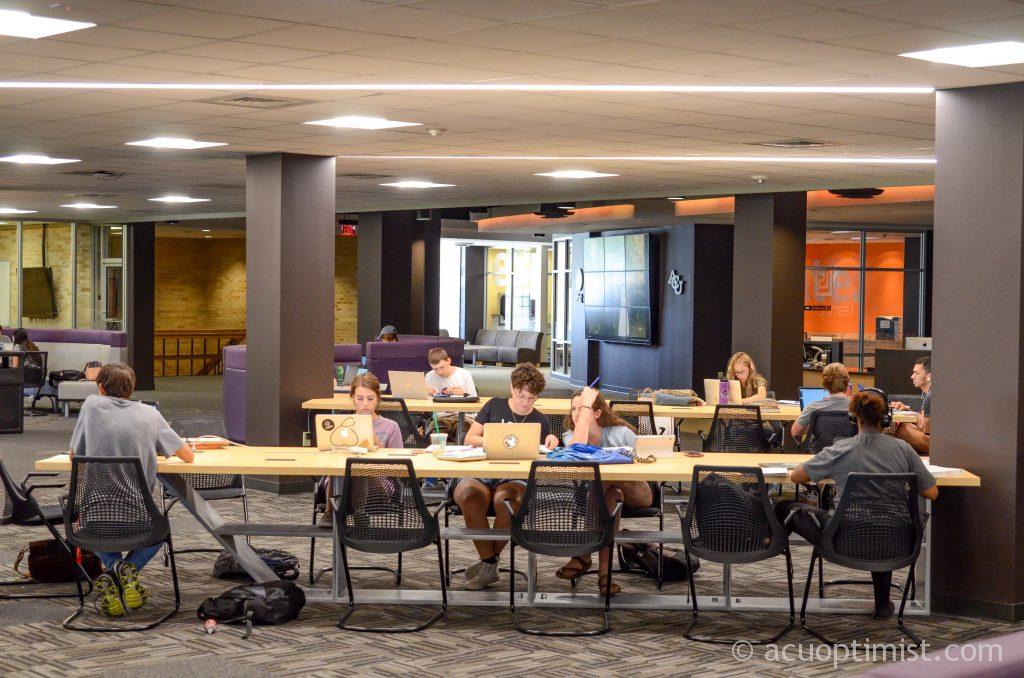The Brown Library will be open until 2 a.m. Sunday through Thursday night beginning Sunday.
The additional eight hours per week will continue through finals week, pick up in the fall semester and run for the entire academic year.
Student Government Association and the library administration worked with Student Life to develop a plan last semester to extend library hours and create a staff position to monitor the additional hours.
SGA provided financial support to install doors on both the top floor to close off the Stanley Reading Room and on the lower level in an attempt to provide greater security during extended hours.
Starbucks will also be open during the extended hours in a pilot period for the first week.
“We want Starbucks to know they appreciate them being open,” said Dr. John Weaver, dean of library services. “They’ll reassess at the end of the week, so we’ll know if this is something we’re going to continue. It’s important that they see this will be used.”
All other areas of the library, including the Learning Studio and the MakerLab, will continue operating under the same hours.
In addition, Student Life worked to include freshmen in the extended hours. Though curfew will still be in effect, the library is considered an approved student space for students to check in after midnight. The Circulation Desk will have an iPad for students to register after curfew.
“That’ll create a list of what freshmen were in the library between midnight and 2 a.m., and student life will be checking that,” Weaver said.
Though the SGA Executive Cabinet will change after elections on April 8, Weaver said he wants to meet with incoming officers to talk with them about the pilot program and make sure all parties are on the same page.
“We’re excited to begin with that incoming administration and make it a success,” Weaver said.
During the summer, hours will remain normal. Weaver said the library stays open long enough to allow students in courses to have access to resources after their classes if needed.
Weaver said this summer, they’ll begin the assessment of how the extended hours are being used and whether they are worth the investment, though there has not been criteria to determine success.
Typically, usage decreases between 10 p.m. and 12 a.m., but Weaver said it might be because people leave to settle down where they’ll be able to stay longer.
“There there’s no place on campus after midnight for students that are working together on team projects that require collaboration,” Weaver said. “I think 2 a.m. is a good first step to test how extended hours will benefit students and how much they will use them.”

